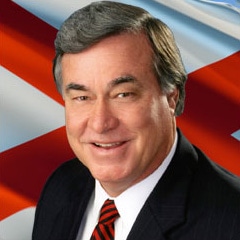Last week I discussed young State Auditor Andrew Sorrell.
Recently, when I had him on my Montgomery television show, we discussed his successful race for State Auditor. He understands the golden rule of politics, “money is the mother’s milk of politics.” In his 2022 race, he raised an amazing, record breaking $714,000, and was able to outspend his opponents 7-to-1.
More impressively, he spent the 7-to-1 advantage prudently and wisely. He designed and produced his own television ads, which cut out a 20% distribution and production charge. The most impressive revelation was that he wisely used his personal campaign time in locales where he took advantage of friends and neighbors politics.
His opponent, Rusty Glover, had a very strong base of support in Mobile where he had been a state representative, state senator and taught school for years. Stan Cooke, his other opponent, was a well known preacher in Jefferson County. Therefore, he acknowledged that these two urban enclaves would vote for their native sons, which they did.
Sorrell realized that this left him as the only North Alabama candidate. He was from the Muscle Shoals, Tuscumbia, Florence area and he worked the Tennessee Valley area as their boy. He carried the vote rich North Alabama. He also worked and cultivated the Wiregrass where there was no hometown candidate. He did well there, also, with the help of television.
In the runoff with Glover out, Sorrell swooped down to Mobile/Baldwin and garnered Glover’s votes and trounced Cooke in the runoff. What surprised me was that in 2022 the old “friends and neighbors premise” still prevailed and even more surprising that it existed in a low profile down ballot race.
I have been preaching and telling you about the pervasive friends and neighbors politics in Alabama for the last 20 years in my columns. When folks come to visit with me in anticipation of running a statewide race, I make them aware that it still exists, especially in the governor’s races. Those of us who are students of southern and Alabama politics attribute the highlighting of friends and neighbors theory to the brilliant southern political scientist Dr. V. O. Key, Jr.
In Dr. Key’s textbook, Southern Politics in State and Nation, written in 1948, he points out that friends and neighbors politics has existed in the south for decades. I am here to tell you that it still exists today.
What is friends and neighbors? It is simply a trend whereby folks will vote for someone from their neck of the woods. Alabamians will vote overwhelmingly for a candidate from their county and adjacent counties. When I taught Southern Politics to college classes, I would tell the students this habit of voting for the hometown boy in Alabama politics was so pervasive that if a candidate from their county or neck of the woods was running statewide and was a well-known drunk or crook they would vote for him. They might say, “I know ole Joe is a drunk or crook, but he’s my drunk or crook.”
You can look at every governor’s race the last 80 years and see our local friends and neighbors voting for the hometown candidate when you dive into the numbers. It is unmistakable.
Dr. Key illustrates it well, first in the 1946 races for governor, congress and U.S. senate. There was an open U.S. Senate when Roosevelt appointed our liberal senator, Hugo Black, to the Supreme Court. The congressman from the Tennessee Valley, John Sparkman, won the Senate Seat riding a 75% hometown vote from Madison and Morgan counties. That Tennessee Valley Congressional Seat was won by Scottsboro lawyer, Bob Jones, because he got an unheard of 97.8% of the vote in Jackson County.
In that same year, Big Jim Folsom won the 1946 governor’s race because he had two hometowns. Big Jim was born and raised near Elba in Coffee County but spent his adult life in Cullman in north Alabama. In that 1946 race, Big Jim garnered 72% in Cullman and 77% in Coffee in the first primary where his statewide average was 28% in the crowded field.
You can point to countless examples in all governor’s races since 1946. There are clearcut examples of localism and regionalism voting for the candidate from your neck of the woods. Friends and neighbors politics is still alive and well.
See you next week.

Steve Flowers
Alabama’s premier columnist and commentator, Steve has analyzed Alabama politics for national television audiences on CBS, PBS, ABC and the British Broadcasting Network. Steve has been an up close participant and observer of the Alabama political scene for more than 50 years and is generally considered the ultimate authority on Alabama politics and Alabama political history.